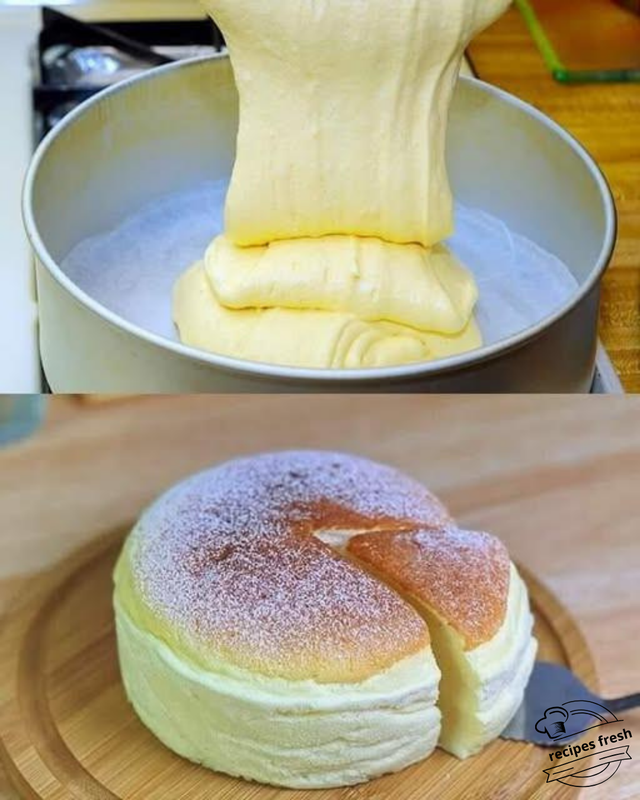YOGURT CAKE: SIMPLE, SOFT AND DELICIOUS RECIPE!
Introduction
Nothing compares to the taste, texture and nostalgia of a classic homemade yogurt cake. Originating from France and adored worldwide, this easy and delightful treat remains an absolute favorite for casual meals, cozy gatherings, and special moments alike. Its simple instructions, everyday ingredients, and guaranteed delicious results make yogurt cake a must-have in your baking repertoire.
In this article, we'll thoroughly explore how to make a classic, moist, and tasty yogurt cake. We'll provide you with clear directions, important baking tips, quantities for ingredients, frequently asked questions, and a conclusion about this wonderful dessert.
Why Yogurt Cake?
Yogurt cake, better known in France as "Gâteau au yaourt," is beloved for many reasons. It offers soft, moist crumb with a subtle tang provided by the yogurt, guaranteeing a pleasing mouthfeel and delicious taste.
The simplicity of this recipe makes it ideal for beginner bakers or even children to try their hand at baking. Additionally, this cake can be easily adapted and customized with your favorite flavors, fruits, or toppings.
A versatile dessert option, this yogurt cake fits wonderfully for various occasions – from daily breakfast or snacks to a light dessert after meals.
Without further ado, let's get started with the ingredients you will need:
Ingredients (with detailed quantities)
- Plain yogurt – 1 small container (125 grams or approximately 1/2 cup)
- Eggs – 3 large, at room temperature
- Granulated Sugar – 1.5 cups (approximately 300 grams)
- All-purpose flour – 2 cups (approximately 260 grams), sifted
- Baking powder – 2 teaspoons
- Vegetable oil (neutral, such as canola or sunflower oil) – 1/2 cup (125 ml)
- Lemon zest – grated zest of one lemon (optional but adds delightful flavor)
- Vanilla extract – 1 teaspoon (optional, adds sweet fragrance)
- Salt – a pinch (to enhance flavor balance)
Directions and Preparation Method
Step 1: Prepare the Oven and Cake Pan
Start by preheating your oven to 350°F (180°C). Grease an 8-inch (20 cm) round cake pan generously with butter or cooking spray. Alternatively, you can line the pan with parchment paper for easy removal after baking.
Step 2: Mixing Wet Ingredients
In a large mixing bowl, whisk together the plain yogurt, eggs, sugar, vegetable oil, lemon zest, and vanilla extract until smooth and well combined. The mixture should be creamy, with sugar dissolved evenly and consistency uniform.
Step 3: Mixing Dry Ingredients
In another bowl, carefully sift the flour and baking powder, adding a pinch of salt. Sifting helps aerate the flour, creating a softer, fluffier texture in the cake.
Step 4: Combining Wet and Dry Ingredients
Gradually add dry ingredients (flour and baking powder mixture) into the wet ingredients. Gently mix with a spatula or whisk just until you achieve a homogeneous batter with no visible lumps. Make sure you don't overmix, as overmixing reduces moisture and could make your cake dense rather than fluffy.
Step 5: Baking the Cake
Pour the prepared batter into the greased cake pan. Gently tap the pan onto the kitchen countertop to remove excess air bubbles from the batter.
Bake the yogurt cake in the preheated oven for about 35–45 minutes. To ensure the cake is perfectly baked, insert a toothpick or skewer into the center; if it comes out clean, your cake is ready. If the toothpick emerges with batter residue, allow further baking and check every 5 minutes.
Step 6: Cooling and Removing From Pan
Once baked, remove the cake from the oven. Allow the cake to cool down in its pan for approximately 10 minutes. Run a knife around the pan edges to loosen it. Then, carefully invert the cake onto a wire rack to cool completely. Removing it immediately from the pan helps prevent the cake from becoming soggy.
Serving Suggestions
This versatile cake can be served in many delightful ways. Popular choices include:
- A modest dusting with powdered sugar, adding visual elegance and gentle sweetness.
- Serving each slice with fresh berries (such as strawberries, raspberries, blueberries) and whipped cream.
- Pairing with vanilla or yogurt-based ice cream to complement its delightful taste.
- Topping with a tangy lemon glaze or even chocolate sauce.
- Simply enjoying a warm, fresh slice with your morning coffee or tea.
Important Baking Tips
Here are a few baking tips to ensure impeccable results:
- Always use room temperature eggs and yogurt to easily and evenly mix ingredients and achieve an ideal cake structure.
- Don't forget sifting flour and baking powder to assist in achieving moisture, fluffiness, and volume in your cake.
- Make sure not to open oven frequently while baking as it lowers oven temperature, affecting baking time and texture negatively.
- Allowing the cake to rest for a while before cutting prevents crumbling and ensures neat slices.
Frequently Asked Questions (FAQs)
Q1: Can I substitute flavored yogurt or Greek yogurt?
A: Yes! You can certainly use Greek yogurt, as it creates an especially moist cake. Flavored yogurts work as well, imparting subtle, different flavors that may be delightful depending on your personal preference.
Q2: How can I store leftover yogurt cake?
A: Once cooled, store your yogurt cake in airtight containers or wrapped with plastic wrap at room temperature for up to 2–3 days or refrigerated for up to one week. For longer storage, wrap tightly and freeze up to two months. Thaw overnight at room temperature before serving.
Q3: Can I make yogurt cupcakes using this recipe?
A: Absolutely! Simply pour batter into cupcake molds, filling each about two-thirds full. Reduce baking time to around 18–20 minutes and check with a toothpick.
Q4: Can I add other flavors or ingredients to this cake for variation?
A: Yes, this recipe is extremely flexible. Popular additions include grated orange zest, berries, chocolate chips, shredded coconut, crushed nuts, and spices like cinnamon.
Q5: Can I make a dairy-free version of this cake?
A: Yes. Simply replace regular yogurt with dairy-free yogurt alternatives, such as soy, almond, or coconut milk-based yogurt substitutes. Use dairy-free margarine or cooking spray to grease the pan as well.
Conclusion
In conclusion, yogurt cake ("Gâteau au yaourt") is not only easy to prepare but deeply satisfying when enjoyed, owing to the delicious mouthfeel, lovely flavor, and versatile presentation options. Its simplicity ensures its position as a timeless baking classic appreciated by all generations.
Whether you're baking for a daily breakfast, weekend brunch, afternoon snack, picnic treat, or even for special festivities, this delightful yogurt cake recipe will always deliver moist and flavorful results. Keep enjoying and experimenting with your variations, and make memories with your loved ones around this timeless treat!
Happy baking!





